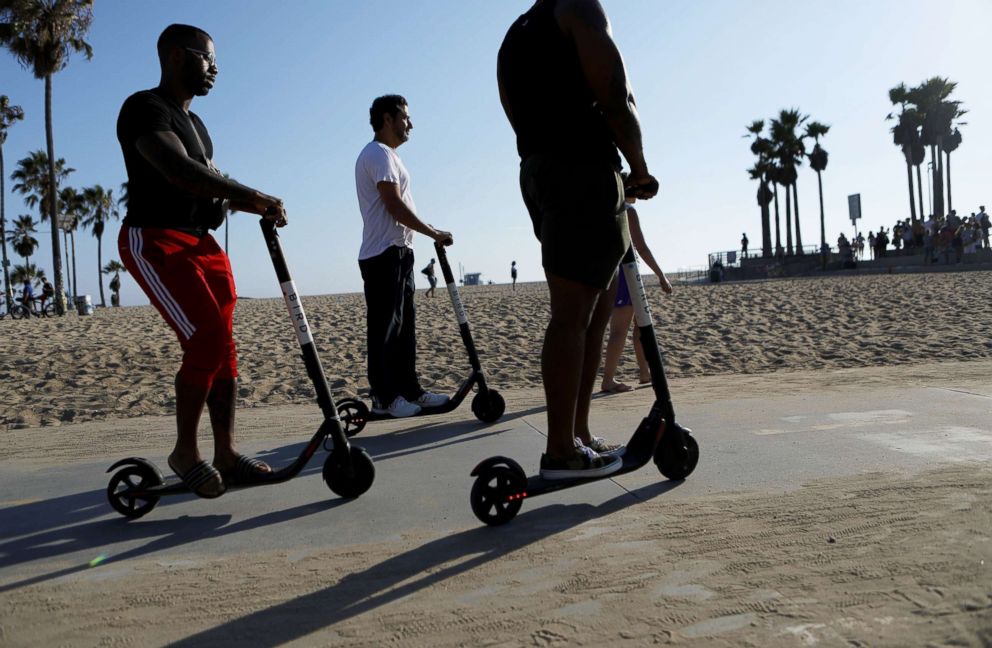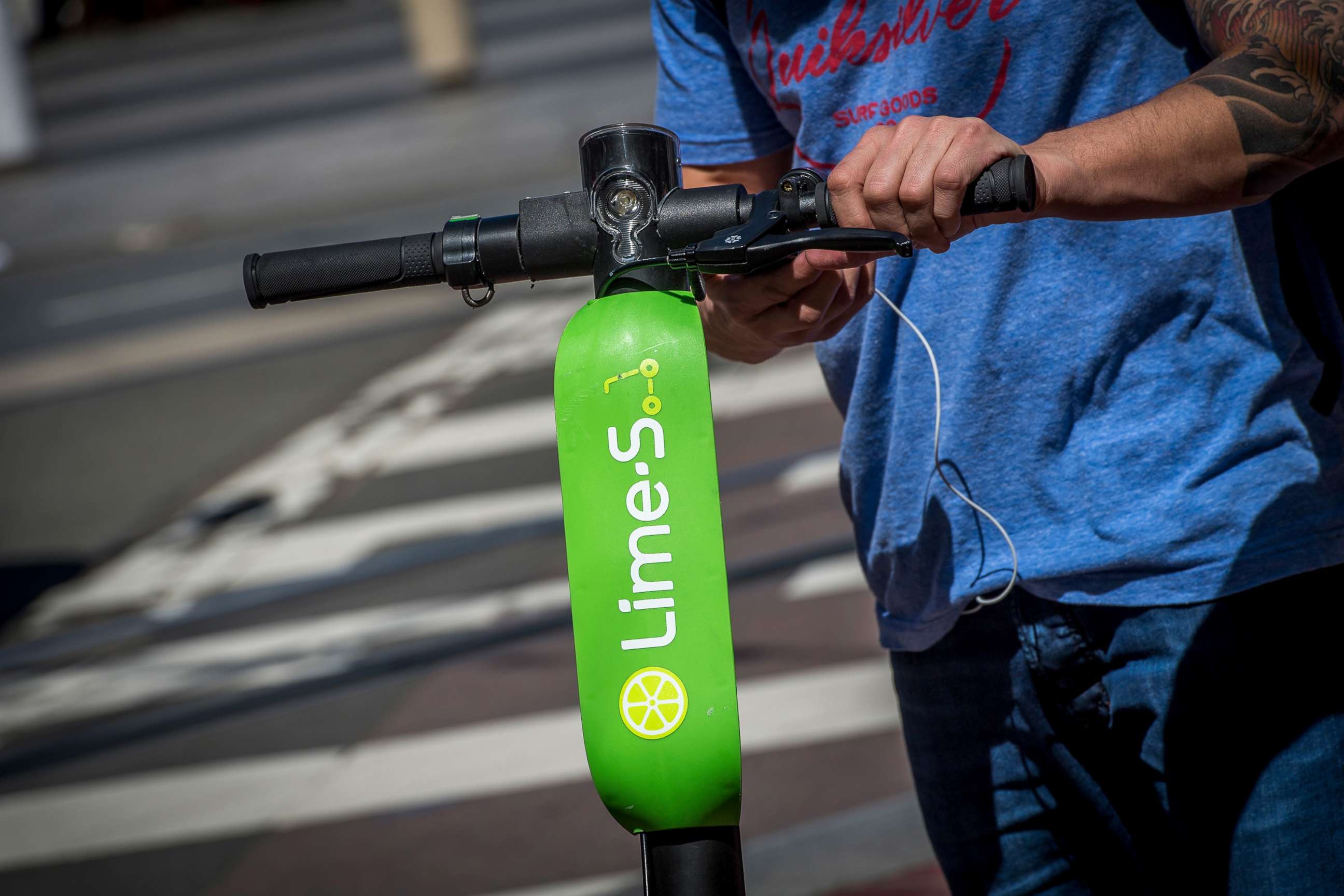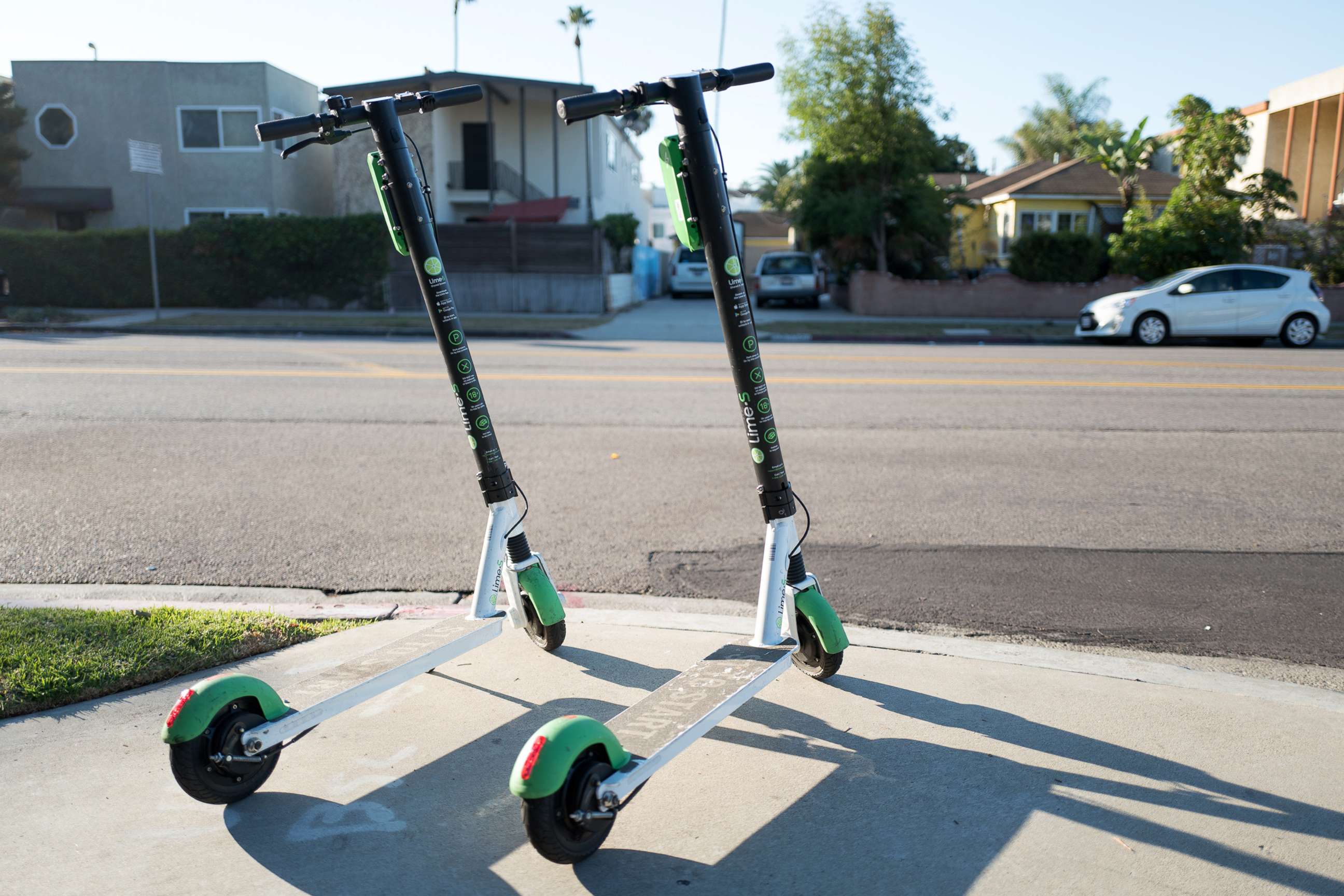Head injuries make up 40% of e-scooter ER visits: Study
Head injuries are 40 percent of e-scooter-related ER visits, a UCLA study says.
Head injuries made up nearly half of all emergency room visits caused by electronic scooter accidents studied by UCLA doctors, according to a study released on Friday.
The most frequent injuries were head injuries (40 percent), fractures (32 percent) and cuts, sprains or bruises without a fracture (28 percent), according to the research. The study was published on Jan. 25 in JAMA Network Open and is the first of its kind to analyze injuries caused by electric scooters, which can reach speeds of up to 35 miles per hour.
Doctors compared the new crop of rental e-scooters to Segways, motorized two-wheeled "transporters" that hit the market in 2001.
“We noted similar patterns of injury,” said Dr. Joann Elmore, professor of medicine at the Geffen School of Medicine, and one of the study’s authors. “But unlike Segway transporters, standing electric scooters will have a substantial impact on public health given their low cost, popularity and broad accessibility.”
Researchers analyzed visits for 249 people treated at the emergency departments of two Los Angeles County facilities, UCLA Medical Center, Santa Monica, and Ronald Reagan UCLA Medical Center between Sept. 1, 2017, and Aug. 31, 2018. The two ERs studied are not the only emergency rooms in the LA area.
As many as one-third of those evaluated had called an ambulance. Researchers did not include 74 ER visits "that were suspected to be scooter-related but lacked sufficient documentation," the press release said.
Fifteen people were hospitalized, and two required treatment in an intensive care unit (ICU), the study revealed.

Los Angeles-area emergency departments are at the epicenter of the electric scooter phenomenon, said Dr. Tarak Trivedi, the study’s lead author. Santa Monica, a city in the county of LA, was one of the first U.S. cities in which the dockless, rental scooters appeared, seemingly overnight. The scooters were distributed before any legislation that could regulate how people use them or companies could operate. Last September, Santa Monica awarded permits to Lyft and JUMP (which is owned by Uber) to legally operate in the seaside city.
Lime and Bird protested and were eventually granted permits.
In November, Lime immediately recalled one of its models globally after it concluded they could break apart while in use. Riders have flooded social media pages with photos and complaints of broken Lime scooters.
At least two deaths have resulted from accidents with Lime scooters. The company is launching a pop-up store in Manhattan with a new model on Friday and Saturday as it pushes to move into New York City.
"At Lime, the safety of our riders and the community is our number one priority," Lime spokeswoman Mary Caroline Pruitt wrote in an emailed statement to ABC News. "The rapid adoption of micromobility across the U.S. and across the globe demonstrates that the future of transportation is clean, efficient and safe."

Lime has launched a new scooter "with enhanced safety features," $1 million in liability insurance, and a $3 million investment in its own "Respect the Ride" campaign to educate riders about safety and responsible riding, Pruitt added.
The most common scooter-related injuries were falls (74 percent), collisions with objects (10 percent), or being struck by another moving vehicle, such as a car, bicycle or other scooters (8 percent), according to the UCLA study.
About 92 percent, or 228 patients, were riders. Another 8 percent, or 21 people, were bystanders who were hit by a scooter or stumbled on one. E-scooters are dockless, and can be left anywhere, and are often found on sidewalks or walkways. Only about 4 percent of the riders were wearing helmets, despite the fact most companies rental agreements either require or recommend them, the study's authors said.
In addition to the ER records, researchers observed e-scooter riders at different LA intersections during one seven-hour period in September 2018 and observed 193 people. They said about 94 percent of the observed riders were not wearing helmets.
Santa Monica-based Bird took issue with not being able to influence the study.
"We hope to have the opportunity to work with the report’s authors so that we can have a productive and collaborative conversation that focuses on proven preventative measures and education. In the case of this study, Bird did not have the opportunity to work with the study’s authors or to collaborate with them, and we find the report to be very limited," Paul Steely White, the company's director of safety policy and advocacy, wrote in an emailed statement.

"It fails to take into account the sheer number of e-scooter trips taken -- the number of injuries reported would amount to a fraction of 1 percent of the total number of e-scooter rides. Moreover, the report fails to put e-scooter injuries into context as they relate to the high number and severity of injuries and deaths caused by motorcycles and automobiles," he added.
Bird led the effort to defeat a helmet law for e-scooter riders in California.
In January, California law eliminated the helmet requirement for e-scooters, after intense lobbying from scooter companies.
The study was funded by the UCLA National Clinician Scholars Program and the VA's Office of Academic Affiliations through the VA/National Clinician Scholars Program. UCLA's Dr. Charles Liu, Anna Liza Antonio, Dr. Natasha Wheaton, Dr. Vanessa Kreger, Dr. Anna Yap and Dr. David Schriger co-authored the study.
Editor’s Note: This report has been updated to clarify an incorrect statistic given to ABC News. One in three e-scooter-related ER patients studied called an ambulance to get there.



